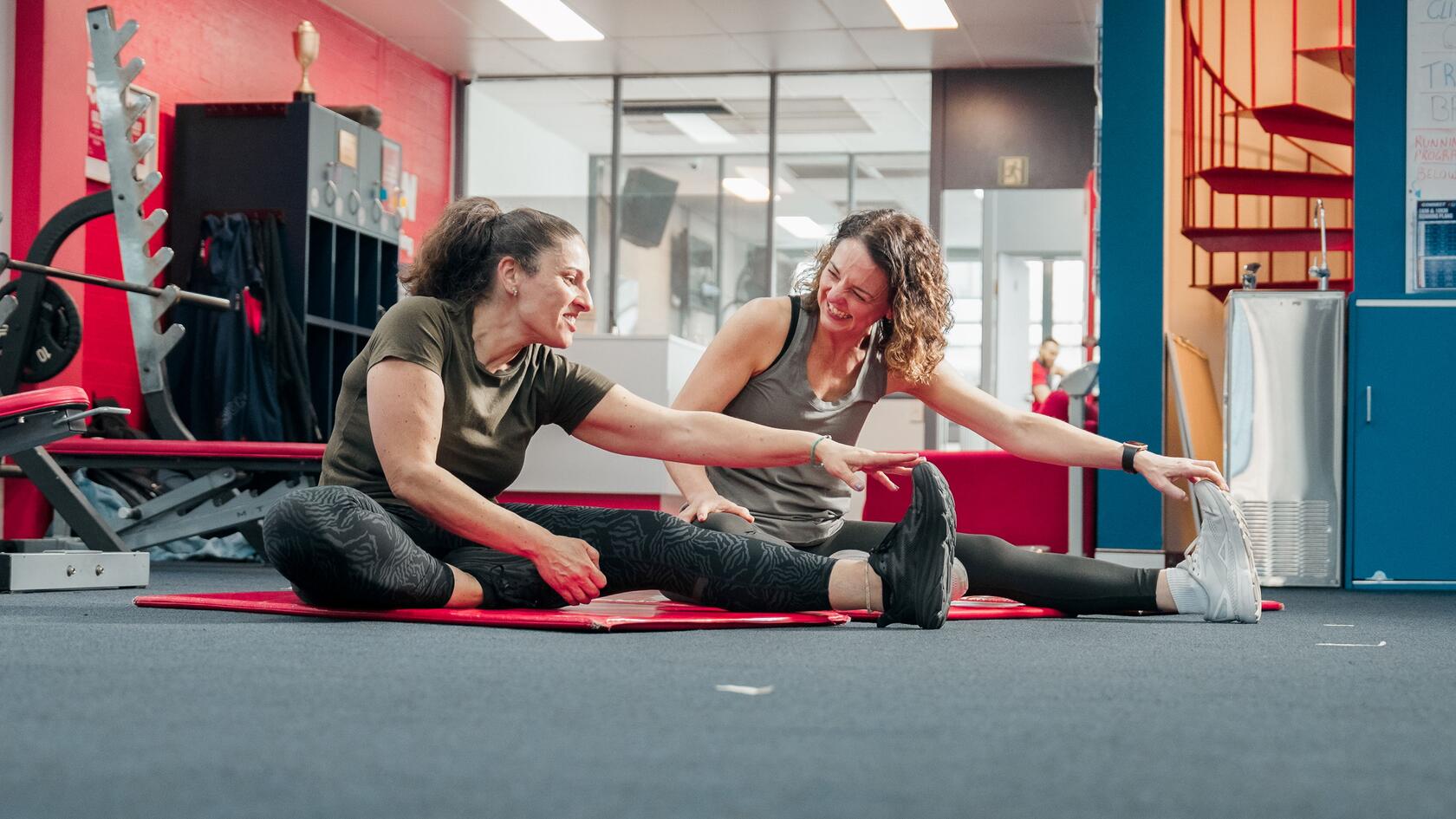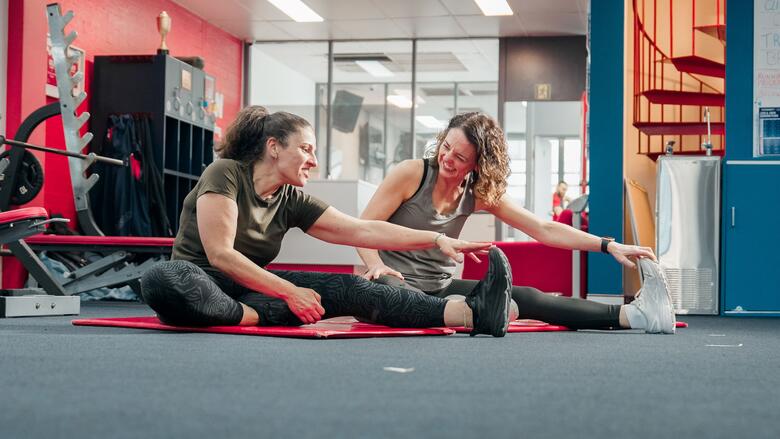Summary
Dynamic stretching is a game-changer for staying agile and active, especially for those 55+. This blog explores how integrating stretching into daily life improves flexibility, mobility, and posture while reducing the risk of injury. At Vision Personal Training, we understand the value of flexibility and mobility in leading a vibrant life. That’s why we now offer one-on-one 30-minute sessions focused solely on stretching, flexibility, and mobility as part of our Personal Training services. These targeted routines help you ease into dynamic stretching techniques, improving recovery and reducing stiffness. Learn how dynamic and static stretches can complement each other for pre-workout activation and post-workout recovery, and why proper form and routine are crucial for reaping maximum benefits.
Key Topics
Dynamic stretching is a transformative practice for maintaining agility and an active lifestyle, particularly for individuals aged 55 and older. Integrating dynamic stretching into daily routines can enhance flexibility, mobility, and posture while mitigating the risk of injury. Vision Personal Training recognises the significance of flexibility and mobility in leading a fulfilling and active life. To address this need, we now offer tailored 30-minute one-on-one sessions focused exclusively on stretching, flexibility, and mobility as part of our Personal Training services.
These specialised routines are designed to help participants ease into dynamic stretching techniques, enhancing recovery and alleviating stiffness. Readers will also learn how dynamic and static stretching can work together to optimise pre-workout activation and post-workout recovery. Emphasis is placed on the importance of proper form and routine to achieve maximum benefit from these practices.
Stretching is not exclusive to younger, active individuals—it is an essential practice for individuals of all ages. Maintaining flexibility and agility becomes increasingly important with age, providing relief from stiffness and enhancing overall mobility.
Importance of Stretching for Older Adults
As individuals age, staying flexible becomes a pivotal factor in maintaining independence and ease of movement. Dynamic stretching, which involves controlled movement rather than static holds, serves as an excellent warm-up by gently preparing muscles for activity. However, for individuals over the age of 65, particular care should be taken to ensure movements are performed safely, especially around vulnerable areas such as the hips and knees. (Healthline).
Age Group | Recommended Stretching Type | Benefits |
55-65 | Dynamic Stretching | Enhances blood flow and improves mobility |
65+ | Static Stretching | Aids in recovery and reduces the risk of injury |
A short dynamic warm-up before engaging in activities can help ensure muscles are primed and ready, reducing the likelihood of strain. Further insights can be found in our dedicated section on stretching exercises.
Value of Flexibility in Daily Life
Flexibility contributes to enhanced daily functionality. Routine activities, such as lifting groceries or reaching overhead, are performed more efficiently when flexibility is prioritised. Regular stretching also improves balance, reducing the risk of falls and enhancing overall movement.
Key Benefits of Flexibility:
Improved Mobility: Keep up with stretching and those daily chores won’t feel quite as gruelling.
Reduced Risk of Injury: Help save those muscles from nasty surprises like strains.
Better Posture: A good stretch keeps the spine happy, which makes slouchy posture a thing of the past.
By incorporating flexibility exercises into daily life, individuals can enjoy a higher quality of movement and an improved sense of overall well-being. For more guidance, explore our comprehensive article on flexibility routines.
For individuals aged 55 and beyond, understanding the distinction between dynamic and static stretching is crucial to optimising performance and improving overall well-being.
Benefits of Dynamic Stretching
Dynamic stretching involves active movements that help prepare the muscles and joints for physical activity. It is particularly effective as a warm-up, as it increases blood flow, enhances flexibility, and reduces the risk of injury. (Cleveland Clinic).
Key Advantages of Dynamic Stretching:
Enhanced Performance: Boosts power and agility for activities like jumping or sprinting.
Improved Circulation: Increases blood flow and delivers oxygen to the muscles.
Injury Prevention: Prepares muscles and joints for movement, reducing the likelihood of strains.
Improved Balance and Flexibility: Encourages a full range of motion, promoting better coordination.
Benefits of Static Stretching
Static stretching, in contrast, is performed by holding a stretch for an extended period, typically after a workout. This method promotes recovery, reduces muscle tension, and enhances flexibility over time. (NASM).
Key Advantages of Static Stretching:
Aids Recovery: Helps muscles relax and return to their resting state.
Increases Flexibility: Encourages a greater range of motion when practiced consistently.
Relieves Muscle Stiffness: Reduces tension in overworked muscles and joints.
Prevents Injuries: Minimises the risk of strains and other post-workout issues.
Incorporating both dynamic and static stretching into your routine ensures a balanced approach to flexibility and mobility.
Integrating regular stretching into daily life offers numerous benefits, particularly for older adults. Stretching enhances flexibility, improves mobility, and reduces stiffness, making everyday tasks more manageable.
Dynamic Stretching Techniques
Dynamic stretching involves controlled movements designed to prepare the body for physical activity. These exercises engage multiple muscle groups and joints, helping to enhance overall mobility and flexibility. Examples include:
Exercise | Target Area | Repetitions |
Free Squats | Legs | 10-12 |
Leg Swings (Forward and Back) | Hamstrings | 10-12 per leg |
Arm Swings | Upper Body | 10-12 |
Heel Lifts & Drops over Step | Calves | 10-12 |
Proper Form and Guidelines
To maximise the benefits of stretching and minimise the risk of injury, proper technique is essential. Consider the following guidelines:
Warm Up First: Begin with a light jog or brisk walk to prepare your muscles.
Smooth Movements: Avoid jerky or bouncy motions; all stretches should be performed fluidly.
Stay Within Your Limits: Stretch until you feel a gentle pull, but never to the point of pain.
Maintain Good Posture: Engage your core and keep your spine aligned during each stretch.
Repetition is Key: Aim for 10–12 repetitions to achieve effective muscle activation.
Stretching plays a vital role in post-workout recovery, particularly for older individuals who remain active. Proper stretching techniques can help reduce muscle tension, prevent injuries, and promote long-term flexibility.
Cooling Down with Dynamic Stretching
Static stretching is the ideal choice for cooling down after physical activity. Holding stretches for 15–60 seconds allows muscles to relax and recover effectively. Examples include:
Stretch | Type | Duration (seconds) |
Quadriceps | Static | 30 - 60 |
Cobra | Static | 20 - 30 |
Hamstring | Static | 15 - 60 |
Stretching for Tissue Recovery
Stretching also supports tissue recovery by encouraging blood flow to fatigued muscles and promoting realignment of muscle fibres. Key recommendations include:
Hold Time: Maintain each stretch for at least 15–60 seconds.
Frequency: Incorporate stretching into your daily routine.
Focus Areas: Target specific muscle groups used during exercise.
Conclusion
Dynamic stretching is an integral component of a well-rounded fitness routine, offering significant benefits in flexibility, mobility, and injury prevention. Whether utilised as a warm-up before exercise or incorporated into daily activities, dynamic stretching can contribute to a more agile and active lifestyle. At Vision Personal Training, we are committed to supporting our clients in achieving their fitness goals. Our specialised 30-minute stretching sessions are designed to enhance flexibility, mobility, and overall well-being. Visit your local studio to discover how dynamic stretching can elevate your fitness journey. Enquire about memberships today and take the first step toward a healthier, more flexible future.

